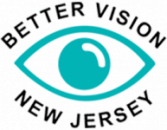How Annual Exams Keep Children’s Eyes Healthy

UV Safety Month: How Summer Rays Harm Eyes
07/11/2018
4 Eye Habits That Keep Your Vision Healthy
09/10/2018This August is Children’s Eye Health and Safety Month. While most parents go above and beyond to keep their children safe and healthy, it is easy to neglect regular examinations of the eyes, arguably the most important sensory organ of the body.
Often parents rely on vision screening tests performed by pediatricians and schools, but these tests should only be supplementary to the comprehensive examinations performed by ophthalmologists. Since research states that 1 in 4 schoolchildren suffers from correctable refractive issues that are not treated adequately, proper examinations by ophthalmologists are a necessary aspect of maintaining your child’s health. These exams serve the crucial function of both preventing vision-threatening damage that undetected eye conditions pose to children, while also detecting common refractive problems.
How Exams Keep Children’s Vision Healthy
Sometimes when children suffer from untreated and undiagnosed vision issues, they exhibit minor symptoms like squinting, experiencing headaches, sitting close to the television, or not being able to see what their parents can during car rides or other outings. However, for many children, parents cannot detect any symptoms, making annual eye exams crucial to uncovering refractive issues or serious eye conditions, like amblyopia.
Detection of amblyopia, also known as lazy eye, is perhaps one of the most important functions of childhood eye examinations. According to research published in Ophthalmology, this condition affects 1-4% of children, is the most common cause of childhood vision loss, and can persist into adulthood. For conditions like amblyopia or strabismus, a condition that can lead to the development of amblyopia, early detection is key. Treatment for amblyopia becomes less effective once a child reaches the age of 7 and only continues to lose effectiveness at older ages. For these reasons, even asymptomatic children should visit an ophthalmologist for an annual comprehensive examination to prevent vision loss and improve quality of life.
In addition to detecting vision-threatening conditions, eye exams also uncover refractive issues that pose problems for millions of children. Myopia, hyperopia, and astigmatism are the most common refractive issues diagnosed, often requiring only contact lenses or glasses for treatment. According to the National Center at Prevent Blindness, 9% of children aged 5-7 suffer from myopia, 13% from hyperopia, and 15-28% from astigmatism. Since these issues are easily treatable, yet extremely widespread, annual eye exams are important for detecting refractive problems as well as keeping prescriptions up-to-date as a child’s vision can frequently change.
Regular eye exams can improve your child’s life by detecting refractive issues, treating conditions like amblyopia, and even preventing vision loss. By scheduling an annual appointment before each school year, you can help your child’s vision remain healthy and safe for life. If you are ready to schedule an appointment, call us today at (908) 276-3030 at our Cranford office or (908) 232-3435 at our Westfield office. Our friendly staff is happy to answer any questions you may have about vision and we look forward to helping you care for your child’s eyes.




